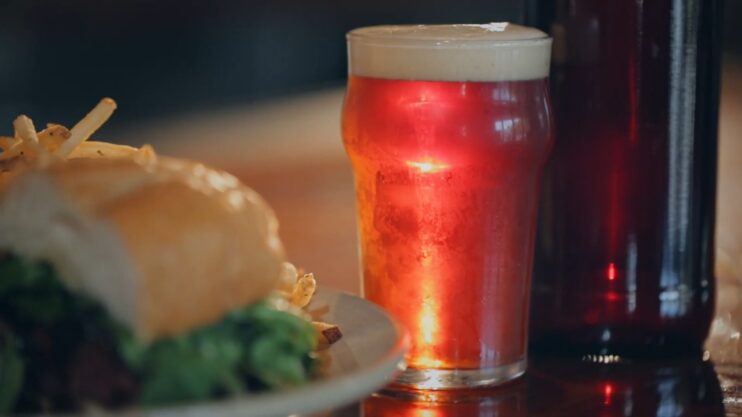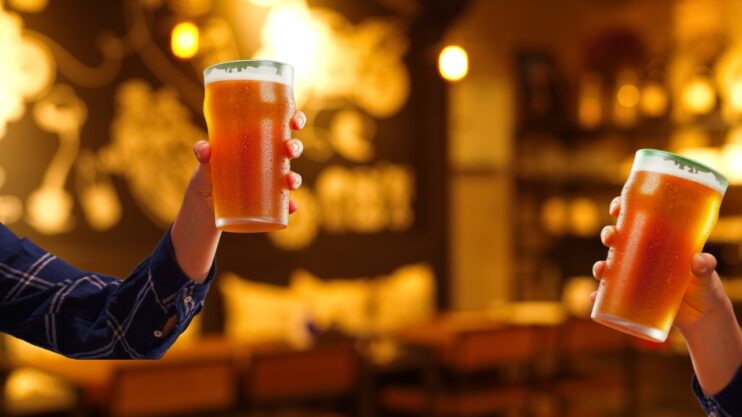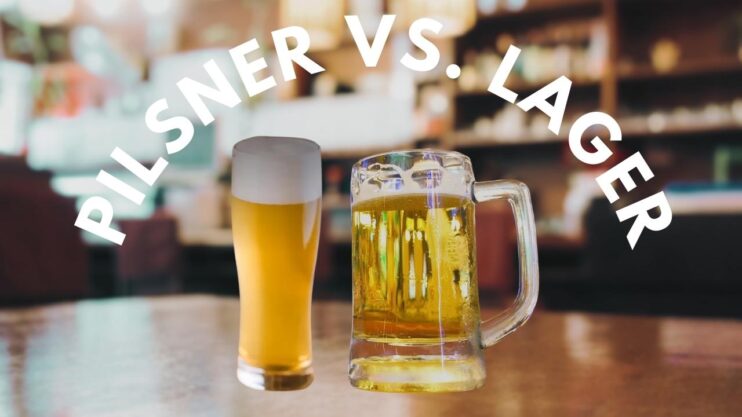Beer, the world’s most widely consumed alcoholic beverage, has a rich and diverse history. From casual gatherings to grand celebrations, beer is often at the center of it all.
Among the many types of beer, Pilsner and Lager stand out as two popular styles. Understanding the differences between these two can enhance your beer-drinking experience, whether you’re a casual enthusiast or a connoisseur.
Pro Tip: When tasting different beers, always start with lighter ones like Pilsners before moving on to heavier Lagers. This helps in preserving your palate.
The Brewing Process
The brewing process for both is fascinating and involves several key steps. While they share some similarities, there are distinct variations in the ingredients and techniques used.
- Mashing: Both start with mashing, where malted barley is mixed with hot water to convert starches into sugars.
- Boiling: Hops are added during boiling, but Pilsners typically use noble hops, giving them a more floral aroma, while Lagers might use a variety.
- Fermentation: Pilsners are fermented at a slightly higher temperature than Lagers, leading to a more expressive yeast character.
Fun Fact: The term “Lager” comes from the German word “lagern,” which means “to store.” This refers to the cold storage process used in brewing.
Historical Background
The origins of styles are deeply rooted in European culture. Pilsner originated in the Czech city of Plzeň in 1842, and its crisp, clear taste quickly gained popularity. Lager, on the other hand, has a broader history, with its roots tracing back to Central Europe in the Middle Ages.
The cultural significance of these beers has evolved over time, reflecting changes in society, technology, and taste preferences. While Pilsner became synonymous with Czech brewing excellence, Lager spread across various regions, each developing its unique twist.
Flavor Profiles
When it comes to flavor, both have unique characteristics that set them apart.
Pilsner
- Flavor: Crisp and refreshing, with a hint of bitterness.
- Aroma: Floral and spicy, often due to the use of noble hops.
- Taste Factors: The type of malt and yeast, along with the water quality, play a significant role in the taste.
Lager
- Flavor: Smooth and balanced, with a clean finish.
- Aroma: Can vary widely, from sweet to bitter, depending on the hops used.
- Taste Factors: The fermentation process and temperature control are key to a well-crafted Lager.
Pro Tip: When tasting these beers, pay attention to the temperature. Pilsners are best enjoyed slightly chilled, while Lagers may offer more flavors at a slightly warmer temperature.
Appearance and Color
The visual characteristics of the two are another way to distinguish between these two beer styles.
Pilsner
- Color: Pale to golden yellow.
- Clarity: Usually clear, with a sparkling appearance.
- Head: Thick and creamy, often leaving a lace on the glass.
Lager
- Color: Can range from pale to dark brown, depending on the type.
- Clarity: Generally clear, but some variants may be slightly hazy.
- Head: Varies, but typically has a persistent, frothy head.
Alcohol Content and Variants
Both come in various substyles and alcohol content ranges, allowing for a wide selection to suit different preferences.
Pilsner
- ABV Range: Typically 4.5% to 5.5%.
- Variants: Czech, German, American.
Lager
- ABV Range: Generally 4% to 6%, but can vary widely.
- Variants: Pale, Amber, Dark, and more.
Pro Tip: If you’re looking to explore different substyles, start with a traditional Czech Pilsner and a classic German Lager. These represent the quintessential characteristics of each category.
Brewing Regions and Brands
The world of beer is vast, and the regions producing the two are rich in tradition and innovation.
Pilsner
- Famous Brewing Regions: Czech Republic, Germany.
- Notable Brands: Pilsner Urquell, Warsteiner.
Lager
- Prominent Lager-producing Areas: Germany, United States, Mexico.
- Notable Brands: Budweiser, Heineken, Corona.
Food Pairing

Pairing the right food with your beer can elevate the entire culinary experience. Here’s how you can match either with food:
Pilsner
- Ideal Pairings: Seafood, salads, light appetizers.
- Optimal Approach: Complement the crispness with fresh and zesty flavors.
Lager
- Ideal Pairings: Grilled meats, burgers, hearty stews.
- Optimal Approach: Balance the smoothness with rich and savory dishes.
Pro Tip: Experiment with regional cuisines that match the beer’s origin. Try a Czech dish with a traditional Pilsner or a German sausage with a classic Lager.
Popular Myths and Misconceptions
There are several myths and misconceptions surrounding the beers. Let’s debunk some of them:
- Myth: The two taste the same.
Truth: While they may share some characteristics, they have distinct flavors, aromas, and appearances. - Myth: Lager is always light in color.
Truth: It can range from pale to dark brown, depending on the specific type and brewing process. - Myth: Higher alcohol content means better quality.
Truth: Alcohol content doesn’t determine quality. It’s the ingredients, brewing technique, and overall balance that make a great beer.
Fun Fact: The world’s oldest brewery, Weihenstephan Brewery in Germany, has been brewing beer since 1040. It’s a testament to the enduring appeal and tradition of beer, including Lagers.
Which Is Right for You?

Choosing between the two comes down to personal preferences and taste considerations.
Pilsner
- For You If: You enjoy a crisp, refreshing taste with floral aromas.
- Best Enjoyed: On a hot day or with light meals.
Lager
- For You If: You prefer a smooth, balanced flavor with a clean finish.
- Best Enjoyed: With hearty meals or as a versatile everyday beer.
The Future
The beer industry is ever-evolving, and both are no exception.
- Trends in Pilsner Brewing: Experimentation with new hop varieties, sustainable brewing practices.
- Advancements in Lager Production: Innovative fermentation techniques, expansion of craft Lager offerings.
Full Table Summarizing the Differences
| Attribute | Pilsner | Lager |
| Flavor Profile | Crisp, refreshing, floral aromas | Smooth, balanced, clean finish |
| Appearance & Color | Pale to golden yellow, clear | Pale to dark brown, clear to hazy |
| Alcohol Content (ABV) | 4.5% to 5.5% | 4% to 6% |
| Variants | Czech, German, American Pilsner | Pale, Amber, Dark Lager |
| Brewing Regions | Czech Republic, Germany | Germany, USA, Mexico |
| Food Pairing | Seafood, salads, light appetizers | Grilled meats, burgers, stews |
| Notable Brands | Pilsner Urquell, Warsteiner | Budweiser, Heineken, Corona |
| Future Trends | New hop varieties, sustainability | Innovative fermentation, craft Lagers |
In our exploration of beer styles, we delve into the world of Tripel Beer, unraveling its taste sensation for a comprehensive understanding.
FAQ

What Are the Main Differences Between Pilsner and Lager?
Flavor, aroma, appearance, and brewing process.
Which Style Has a Higher Alcohol Content?
Generally similar, but can vary.
Can I Use the Terms Pilsner and Lager Interchangeably?
No, they are distinct styles.
Are There Gluten-Free Options Available for Both Styles?
Yes, many breweries offer gluten-free versions.
Conclusion
Pilsner and Lager, two iconic beer styles, offer a world of flavors, aromas, and experiences to explore. Whether you’re drawn to the crispness of Pilsner or the smooth versatility of Lager, there’s a beer for every palate.
So why not grab a glass of your favorite or venture into something new? The world of beer awaits, and the journey is as delightful as the destination.

